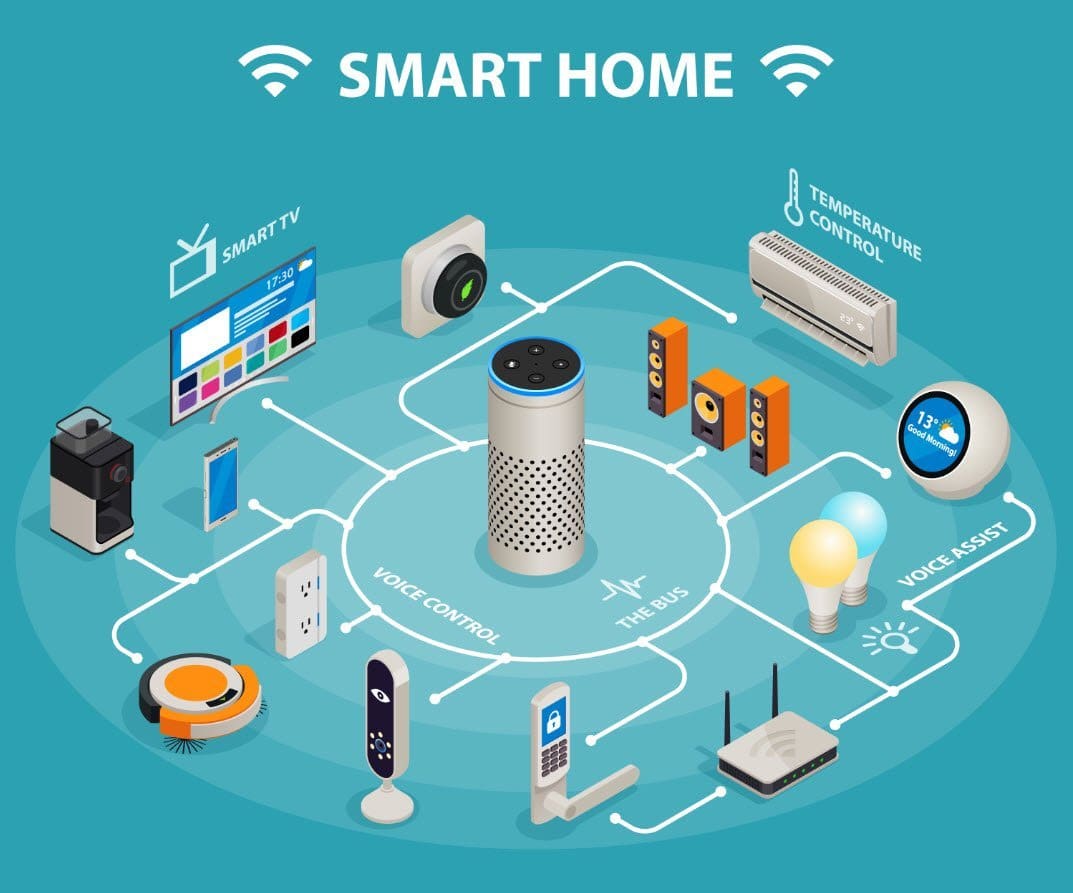Imagine having a home where your lights automatically turn on as you walk in, your thermostat adjusts to your preferred temperature, and your security system can be controlled with just a tap on your phone. Smart home devices have become increasingly popular, revolutionizing the way we live. But have you ever wondered how long these devices actually last? From smart bulbs to voice assistants, this article will uncover the lifespan of typical smart home devices, giving you a glimpse into the longevity of these innovative gadgets.
Introduction
Welcome to the world of smart home devices! In this comprehensive article, we will explore the lifespan of these innovative gadgets and discuss factors that can affect their longevity. We’ll also delve into specific types of smart home devices and provide strategies for prolonging their lifespan. Finally, we’ll take a glimpse into the future and explore the exciting developments that lie ahead in the world of smart home technology.
1. Understanding Smart Home Devices
1.1 Definition of Smart Home Devices
Smart home devices refer to a wide range of interconnected devices that enhance the automation and convenience of our homes. These devices are equipped with advanced technology, such as artificial intelligence and Internet of Things (IoT) capabilities, allowing them to communicate with each other and with us. From voice-controlled speakers to smart security systems, these devices make our lives easier and more efficient.

1.2 Types of Smart Home Devices
The world of smart home devices is vast and diverse. Some popular types of smart home devices include smart speakers, smart thermostats, smart light bulbs, smart security systems, smart home hubs, smart cameras, smart door locks, smart TVs, smart appliances, and wearable smart devices. Each of these devices serves a unique purpose and contributes to creating a smart and connected living environment.
1.3 Benefits of Using Smart Home Devices
Smart home devices offer numerous benefits to homeowners. Firstly, they provide convenience and efficiency by automating routine tasks. For example, smart thermostats allow you to control the temperature of your home remotely, while smart appliances can be programmed to start and stop at specific times. Secondly, smart home devices enhance security by providing features like facial recognition, motion detection, and remote monitoring. Finally, these devices can help save energy and reduce utility bills by optimizing the usage of resources such as electricity and water.
2. Factors Affecting Lifespan
Several factors can influence the lifespan of smart home devices. Let’s explore some of these factors in detail:
2.1 Build Quality
The build quality of a smart home device is a crucial determinant of its lifespan. Devices made with high-quality materials and craftsmanship are more likely to withstand the test of time. It’s important to choose reputable manufacturers known for their commitment to quality and durability.
2.2 Components and Materials
The components and materials used in smart home devices play a significant role in their lifespan. Higher-quality components tend to last longer and perform better over time. Similarly, devices made with durable and resilient materials are more likely to resist wear and tear.
2.3 Usage Patterns
The way you use your smart home devices can also impact their lifespan. Excessive or improper use, such as overloading smart outlets or frequently cycling devices on and off, can accelerate wear and tear. It’s essential to follow manufacturers’ guidelines and use the devices as intended to ensure their longevity.
2.4 Technology Obsolescence
As technology evolves, older smart home devices may become outdated and unsupported. Manufacturers may stop providing software updates or compatibility with new technologies, rendering the devices less functional and less secure. This can significantly affect the lifespan of a smart home device, as it may become obsolete sooner than expected.
3. Lifespan of Specific Smart Home Devices
Let’s take a closer look at the average lifespans of some popular smart home devices:
3.1 Smart Speakers
Smart speakers, such as Amazon Echo and Google Home, typically have a lifespan of around 3-5 years. However, this can vary depending on factors such as usage, build quality, and technological advancements.

3.2 Smart Thermostats
Smart thermostats generally have a lifespan of 5-10 years. They are designed to be durable and withstand continuous usage and temperature fluctuations.
3.3 Smart Light Bulbs
The lifespan of smart light bulbs varies based on factors such as brand, usage, and the technology used. On average, these bulbs can last anywhere from 15,000 to 25,000 hours, equivalent to 10-20 years of regular use.
3.4 Smart Security Systems
Smart security systems, including cameras, motion sensors, and alarm systems, are built to last. With proper maintenance and regular updates, these devices can have a lifespan of 5-10 years.
3.5 Smart Home Hubs
Smart home hubs, like Samsung SmartThings or Apple Home Pod, have an average lifespan of 3-5 years. However, their longevity can be extended through software updates and compatibility with newer technologies.
3.6 Smart Cameras
The lifespan of smart cameras can vary, but most models can last anywhere from 5-10 years. Regular maintenance and software updates are essential to ensure optimal performance.
3.7 Smart Door Locks
Smart door locks are designed to be durable and secure. On average, they can last 5-10 years, depending on usage and maintenance.

3.8 Smart TVs
Typically, smart TVs have a lifespan of 7-10 years. However, this can vary based on usage, brand, and advancements in display technology.
3.9 Smart Appliances
The lifespan of smart appliances, such as refrigerators or washing machines, is similar to their non-smart counterparts. On average, these devices can last 10-20 years, depending on brand, maintenance, and the technology integrated.
3.10 Wearable Smart Devices
Wearable smart devices, like fitness trackers or smartwatches, usually have a lifespan of 2-4 years. However, advancements in technology and regular firmware updates can significantly extend their lifespan.
4. Prolonging the Lifespan of Smart Home Devices
To get the most out of your smart home devices and extend their lifespan, consider the following strategies:
4.1 Regular Maintenance
Perform regular maintenance tasks recommended by the manufacturer, such as cleaning, battery replacement, and inspection. This helps prevent issues and ensures optimal performance.
4.2 Firmware Updates
Stay up to date with firmware updates provided by the manufacturer. These updates often include bug fixes, security patches, and compatibility enhancements, which can prolong the lifespan of your device.
4.3 Proper Usage and Handling
Follow the manufacturer’s guidelines for proper usage and handling of smart home devices. Avoid exposing them to extreme temperatures, water damage, or physical stress. These precautions can significantly impact the longevity of your devices.
4.4 Compatibility with Future Technologies
When purchasing smart home devices, consider their compatibility with future technologies. Investing in devices that are likely to support upcoming advancements can ensure their longevity and prevent premature obsolescence.
5. Extending Lifespan: Repair or Replace
At some point, you may need to decide whether to repair or replace a smart home device. Consider the following factors to make an informed decision:
5.1 Repairing Smart Home Devices
If a device malfunctions or is damaged, explore the possibility of repairing it. Some repairs are simple and cost-effective, and they can extend the lifespan of your device. Research local repair services or check if the manufacturer provides repair options.
5.2 Upgrading and Replacing
When a smart home device becomes obsolete or its performance no longer meets your needs, it may be time to consider upgrading or replacing it. Evaluate the features, compatibility, and advancements offered by newer models before making a decision.
6. Strategies for Longevity in the Smart Home Industry
To ensure the longevity of smart home devices across the industry, various strategies can be implemented:
6.1 Industry Standards
Establishing clear industry standards for smart home devices can ensure that manufacturers adhere to guidelines regarding build quality, component durability, and software support. These standards can enhance the overall lifespan and performance of smart home devices.
6.2 Consumer Demands
As consumers, we play a vital role in shaping the lifespan of smart home devices. By demanding products that are durable, upgradable, and compatible with future technologies, we encourage manufacturers to focus on longevity and sustainability.
6.3 Sustainable Design and Manufacturing
Incorporating sustainable design and manufacturing practices can positively impact the lifespan of smart home devices. By using eco-friendly materials, reducing waste, and promoting recycling and repairability, manufacturers can contribute to a more sustainable and long-lasting smart home industry.
7. The Future of Smart Home Devices
The future of smart home devices is bright and filled with exciting possibilities. Let’s explore some developments and predictions for the years to come:
7.1 Evolving Technologies
Advancements in technologies such as artificial intelligence, machine learning, and voice recognition will continue to shape the future of smart home devices. These technologies will enable smarter, more intuitive devices that offer enhanced functionality and seamless integration into our daily lives.
7.2 Predictions and Forecasts
Experts predict that the market for smart home devices will continue to grow rapidly, with more households embracing the benefits of a connected living environment. As demand increases, manufacturers will strive to improve the lifespan and durability of these devices, providing consumers with reliable and long-lasting solutions.
8. Conclusion
Smart home devices bring automation, convenience, and efficiency to our homes. By understanding the factors that affect their lifespan and implementing strategies for longevity, we can make the most of these innovative technologies. Whether it’s regular maintenance, firmware updates, or proper usage, taking care of our smart home devices ensures they serve us well for years to come. As the smart home industry continues to evolve, we can look forward to even more exciting advancements that will shape the way we live and interact with our homes. So, embrace the future and enjoy the wonders of your smart home devices!
